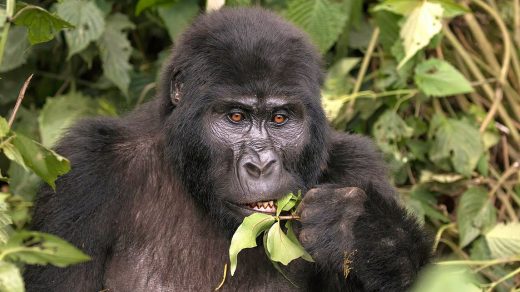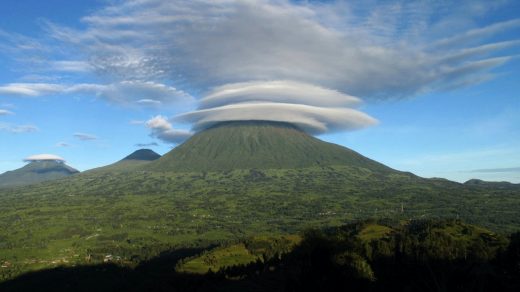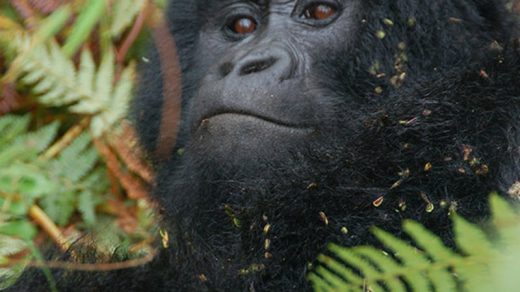The Cross River gorilla (Gorilla gorilla diehli) is one of the four subspecies of gorilla. It is listed as Critically Endangered by the IUCN.
Estimates published in 2014 suggested that fewer than 250 mature Cross River gorillas remained in the wild. All the other subspecies of gorilla have larger populations than this. It is possible, however, that the 2014 estimate had not taken all Cross River gorilla individuals into account.
According to a study published in 2000, the Cross River gorilla probably began evolving into a distinct subspecies during an arid period of the African Pleistocene, when food sources were in decline. According one hypothesis, the ancestors of today´s Cross River gorillas became secluded to a forest region near the Cross River headwaters and/or elsewhere in the highlands of Cameroon, where they evolved in isolation.
Distribution
This is the most western and northern of the gorilla subspecies, and it is only found in the Cameroon-Nigeria border region, at the headwaters of the Cross River.
There are 11 well-known localities for Cross River gorillas across a 12,000 square kilometre large area in the Nigeria-Cameroon border region, but recent field surveys have indicated that some gorillas might live outside these known localities, although still within the 12k sq km range.
Genetic research have indicated that occasionally, individual Cross River gorillas move from one group to another, and this helps keep the dispersed groups in contact with each other across the range. Fragmentation of remaining gorilla habitats is a threat against this interchange, as it makes it increasingly difficult for individuals to move from one group to another.
As late as the 20th century, Cross River gorillas were still observed roaming lowland localities. Since then, habitat loss and human activities have driven them to only stay in hilly areas and the highlands.
Habitat
The Cross River gorillas lives in forested hills and mountains along the Cameroon-Nigeria border, at and near the headwaters of the Cross River. The seem to prefer densely forested environments with no human settlements.
The forests currently inhabited by Cross River gorillas range in altitude from circa 100 metres above sea level to over 2,000 metres.
Conservation
Examples of major threats against the Cross River gorilla are habitat loss, the fragmentation of the remaining habitats, and gorillas being killed for their meat.
Habitat loss and degradation is chiefly due to expanding human settlements, expanding farming, commercial logging, and fuel wood harvesting.
Some of the Cross River gorilla habitats are now legally protected (partly in response to the subspecies being listed as Critically Endangered by the IUCN), but some are not – such certain habitats between the Kagwene Mountain and Upper Mbulu, and around Mone North. Also, there are issues with insufficient enforcement of the law.
Researchers have suggested that local folklore regarding the Cross River gorillas have spared them from hunting in the past, and that this also explains the gorillas ambivalent responses to humans approaching them. Cross River gorillas living on the Kagwene Mountain in Cameroon have been observed throwing grass at researchers. On such occasions, the gorillas first observe the researchers, then reacts to their presence with vocalizations that calms the group, before male gorillas approach the researchers and throw grass at them.


